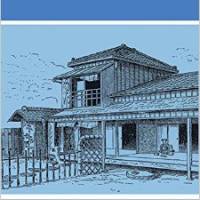"Japanese Homes and Their Surroundings" was first published in 1886, less than two decades after the Meiji Restoration, a time when Japan reopened itself to the world. But the same openness that allowed Morse to document Japanese architecture as a living tradition would soon transform the urban landscape beyond recognition.
Japanese Homes and
Their Surroundings, by Edward S. Morse
372 pages.
Dover, Nonfiction.
Morse was one of the great 19th-century polymaths. He came to Japan to study brachiopods, but by the time he left was also a world authority on Japanese pottery and had invented the word Jomon (albeit via English: "cord-marked"). This far-ranging curiosity means his book covers virtually every material aspect of domestic life, from fences to furnishings, illustrated with sketches that more than hold their own against the avalanche of photography available to the contemporary reader.
One criticism that has often been leveled at "Japanese Homes" is that Morse is too partisan — too eager to overlook the inconveniences of Japanese housing, too scornful of U.S. carpenters. We may wish for more information on how these spaces reflected and reinforced the social structures of the day, but Morse's obstinate focus is also the book's strength. Rather than offer embarrassing ruminations on the Japanese soul, he simply described how they built and furnished their houses. Fortunately, the result remains enjoyable reading more than a century on.
Read archived reviews of Japanese classics at jtimes.jp/essential.

















With your current subscription plan you can comment on stories. However, before writing your first comment, please create a display name in the Profile section of your subscriber account page.